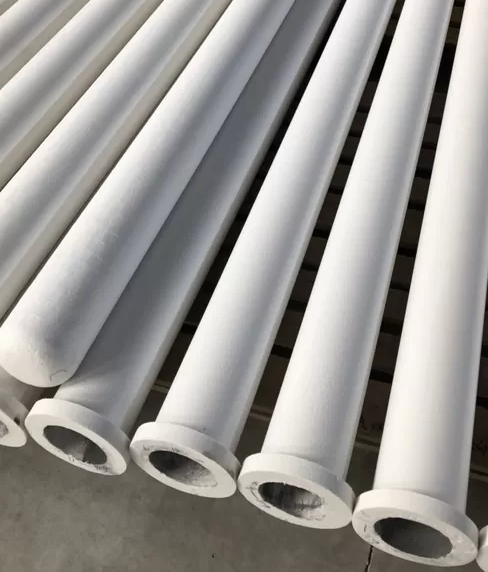
Wedge AlSi | Alumina Silicate Ceramic Fiber Blanket & Boards
Ceramic fiber insulation materials are widely used for high-temperature insulation in various industrial applications. They offer excellent thermal stability, low thermal conductivity, and resistance to thermal shock. Here’s an overview of ceramic fiber insulation blankets and boards, including their composition, properties, applications, and benefits.
Ceramic Fiber Insulation Blankets
Composition: Ceramic fiber blankets are made from high-purity alumina-silica materials. They are produced through a process involving the melting of these materials at high temperatures, followed by fiberizing and forming into blankets.
Properties:
-
High Temperature Resistance: Withstand temperatures up to 2300°F (1260°C) or higher, depending on the grade.
-
Low Thermal Conductivity: Provides excellent insulation and energy savings.
-
Lightweight: Easy to handle and install.
-
Flexibility: Can be easily cut and shaped to fit various applications.
-
Thermal Shock Resistance: Can withstand rapid changes in temperature without damage.
-
Chemical Stability: Resistant to most chemicals, except for hydrofluoric acid, phosphoric acid, and concentrated alkalis.
Applications:
-
Furnace and Kiln Linings: Used in industrial furnaces, kilns, and ovens.
-
Pipe and Duct Insulation: Insulating high-temperature piping and ductwork.
-
Expansion Joint Seals: Flexible and resilient material for sealing gaps.
-
Heat Shields and Gaskets: Protective barriers against heat.
-
Fire Protection: Fireproofing applications and fire-rated construction.
Ceramic Fiber Insulation Boards
Composition: Ceramic fiber boards are manufactured from high-purity alumina-silica fibers, mixed with binders and formed into rigid boards through a vacuum forming process.
Properties:
-
High Temperature Stability: Can endure temperatures up to 3000°F (1650°C) depending on the board type.
-
Low Thermal Conductivity: Excellent insulating properties.
-
Mechanical Strength: Rigid and durable structure.
-
Dimensional Stability: Maintains shape and size even at high temperatures.
-
Ease of Machining: Can be cut, drilled, and shaped with standard tools.
-
Thermal Shock Resistance: Can handle rapid temperature changes.
-
Chemical Resistance: Stable in most chemical environments, similar to ceramic fiber blankets.
Applications:
-
Furnace and Kiln Insulation: Lining and back-up insulation for furnaces and kilns.
-
Industrial Ovens: Used in the construction of high-temperature industrial ovens.
-
Refractory Backup: Acts as a backup lining behind dense refractories.
-
Heat Shields: Protects structures from high temperatures.
-
Energy Conservation: Insulates equipment and reduces energy consumption.
-
Fireproofing: Utilized in fire protection systems and components.
Benefits of Ceramic Fiber Insulation
-
Energy Efficiency: Reduces heat loss, leading to lower energy costs.
-
Improved Safety: Enhances fire protection and reduces the risk of thermal hazards.
-
Longevity: Durable materials that provide long-lasting insulation performance.
-
Versatility: Suitable for a wide range of high-temperature applications across various industries.
-
Environmental Resistance: Performs well in harsh chemical and physical environments.
Ceramic fiber insulation blankets and boards offer a reliable solution for high-temperature insulation needs in industrial and commercial applications. Their excellent thermal properties, combined with lightweight and durable characteristics, make them a preferred choice for engineers and designers looking to improve energy efficiency and safety in high-heat environments. Whether used for lining furnaces, insulating ducts, or providing fire protection, ceramic fiber products deliver superior performance and cost-effectiveness.































